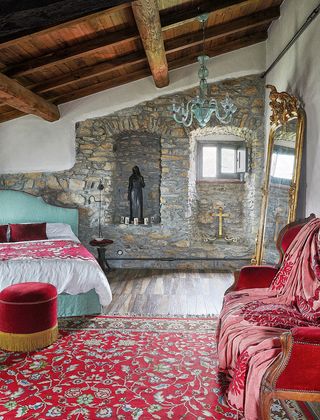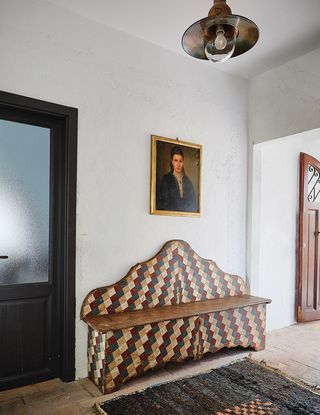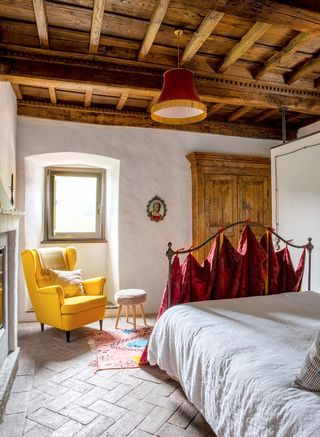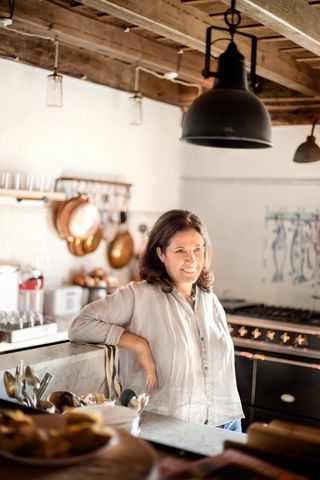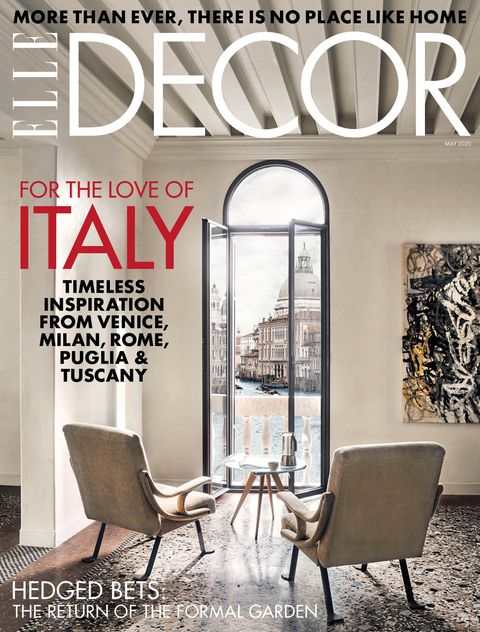12th-Century Tuscan Fortress That’s Now a Creative Retreat
Frances Mayes’s best-selling 1996 memoir Under the Tuscan Sun inspired countless Italophiles to search for a run-down farmhouse in the gentle hills of Tuscany to restore and call their own.
Stylist Annette Joseph chose a slightly different direction. In 2016, she and her husband, Frank, bought La Fortezza, a 12th-century fortress in Tuscany’s northwest corner, a wild and mountainous area known as the Lunigiana.
“It was one of the first properties that we looked at,” says Joseph, an Atlanta-based food and prop stylist. “But it was in such disrepair. I couldn’t visualize it.”
The rugged stone structure, built into a hillside, was composed of four separate buildings on different levels. Originally constructed as a defensive tower in the 1100s, the fortress was later converted into a farmhouse. When Joseph first saw it in 2012, it was owned by two brothers who were as ambivalent about selling as she was about buying. She decided to walk away.
For the next four years, Joseph searched for her dream home, a place that would be both a private retreat for herself and her husband, a hand surgeon, and their two grown children, plus a space where she could run creative workshops and invite colleagues to host their own. (Her book about her longtime love affair with Italy, called Italy Is My Boyfriend, is out this month.) Eventually, she circled back to the fortress, drawn by its location and details like wood-beam ceilings and terra-cotta floors.
“It took three visits for me to figure it out,” says Joseph. “Then everything connected.”
She renovated the private residence at the top of the fortress tower, enlarging the tiny kitchen and then knocking down a wall to create a living and dining area. A sofa in a royal-blue velvet and emerald-green dining chairs provide rich pops of color against stark white walls. The once-dilapidated upstairs, an attic that was used to roast chestnuts, is now a master bedroom suite with a handmade copper tub from Marrakech in the bathroom.
A former storage building was converted to a studio with a long wooden table and open metal shelving for holding styling props. Steps away, a terrace edged with a colorful banquette offers views of the lush Tuscan landscape.
On the lowest level, the commercial kitchen gleams with a black Lacanche range, an antique marble sink, and tiles in white, blue, and brown with a fish motif. Even more eye-catching is the “chandelier” suspended over the dining table: an inverted and wired 18th-century tin tub that throws a soft glow over the room. Nearby are the rose and vegetable gardens, handy for cooking and styling classes, and sleeping quarters for students and guest instructors, each done in a spare but comfortable style that Joseph describes as “part monastic, part bohemian.”
To furnish La Fortezza, Joseph turned to a variety of sources, including antiques and flea markets, online auctions, and local artisans. Her favorite touch? The exposed plumbing and electrical work installed by her Italian plumber. Copper pipes run along walls to meet up with salvaged marble sinks; neatly contained wires carry power to porcelain switches.
Joseph was in Italy in March testing recipes for her next book, La Fortezza Cookbook, when the situation started to go south. She returned to the United States about a week before the travel ban was implemented. “I am gutted and worried about my friends,” says Joseph, who stays in touch with her Italian neighbors via WhatsApp. Still, she intends to return to Italy and is planning fall workshops on photography and olive harvesting. “In Italy, they say the house finds you,” she says. “La Fortezza found us, and we are very happy she did.”
This story originally appeared in the May 2020 issue of ELLE Decor. SUBSCRIBE


